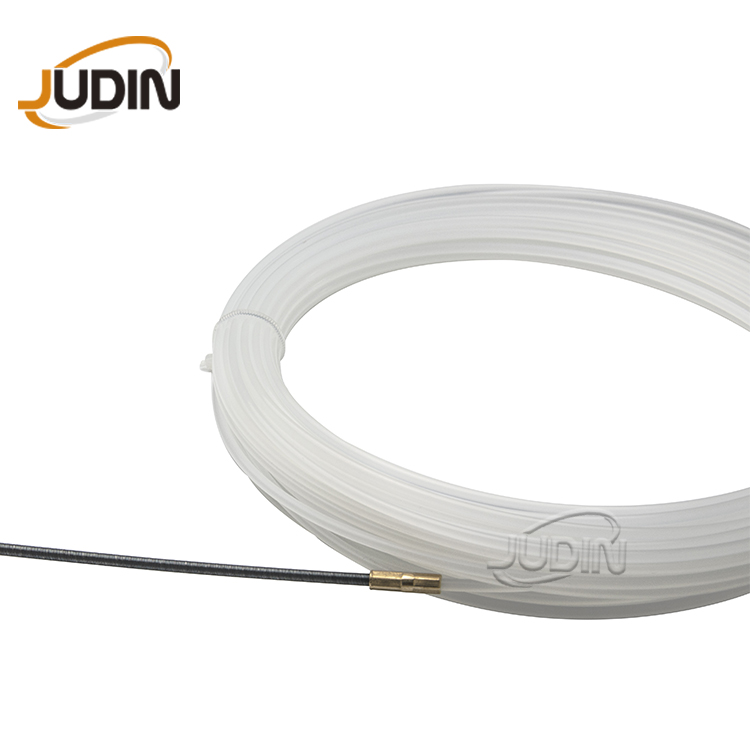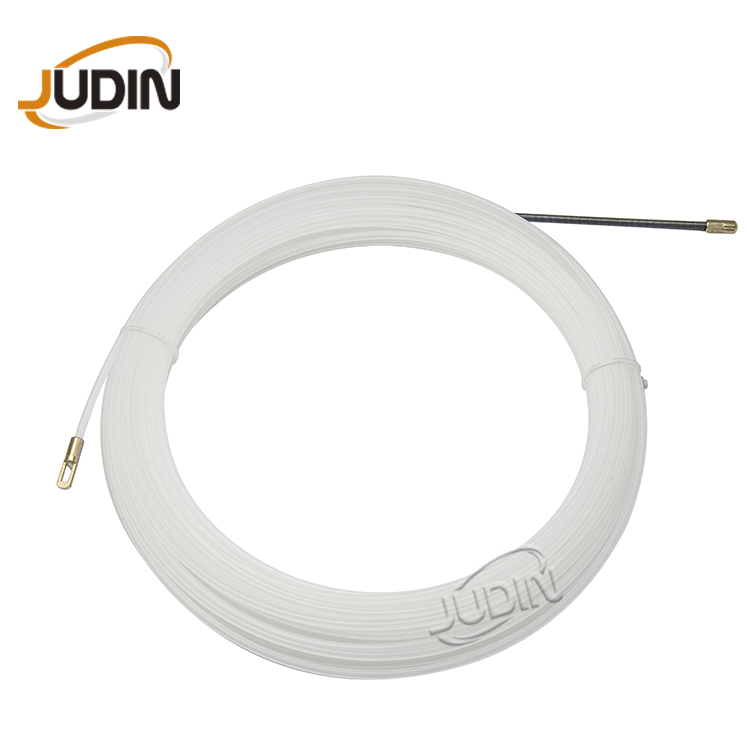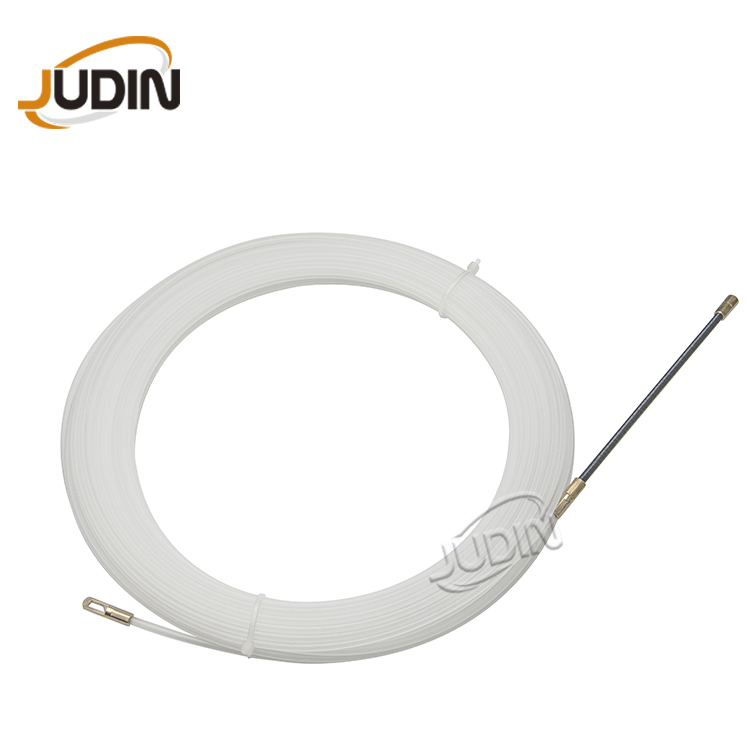Ever struggled to pull wires through walls or conduits? Fish tape makes this task a breeze. It’s your go-to tool for navigating tight spaces and tricky corners. Whether you’re a pro or a DIY enthusiast, mastering fish tape can save time and effort. Let’s dive into how it works and why it’s essential.
Key Takeaways
- Fish tape makes pulling many wires easier and faster. It saves time and avoids stress.
- Get ready first: clean your area, check paths, and collect tools. This helps the job go smoothly.
- Lubricants help fish tape slide through pipes easily. They stop it from getting stuck and make work quicker.
What Is Fish Tape and Why Use It?
Definition and Purpose
Fish tape is a long, flexible tool designed to help you pull wires through tight spaces, conduits, or walls. It’s usually made from durable materials like nylon or steel and comes in a spool for easy handling. You feed the tape through a pathway, attach your wires, and pull them back through. This tool is essential for electrical work, especially when dealing with hard-to-reach areas.
Tip: Think of fish tape as your helping hand for navigating tricky corners and hidden spaces.
Benefits of Fish Tape
Using fish tape makes wire installation faster and easier. Here’s why you’ll love it:
- Saves time: You can pull multiple wires at once, cutting down on installation time.
- Reduces frustration: No more struggling to thread wires through tight spots.
- Improves accuracy: It helps you guide wires exactly where they need to go.
- Versatile: Works for various projects, from home repairs to professional installations.
Key Features of Nylon Fish Tape
The Nylon Fish Tape stands out for its durability and flexibility. Here’s what makes it special:
- Material: Made from 100% new nylon, it’s lightweight yet strong.
- Sizes: Available in different diameters (3.0mm or 4.0mm) and lengths (10m, 20m, 30m).
- High tensile strength: Lets you pull multiple wires with ease.
- Smooth steel cable head: Makes maneuvering through conduits effortless.
- Customizable: You can even add your brand for a personal touch.
This tool is perfect for professionals and DIY enthusiasts alike. Whether you’re working under floorboards or inside walls, the Nylon Fish Tape simplifies the job and boosts your efficiency.
Step-by-Step Guide to Using Fish Tape
Preparing Your Workspace
Before you even touch the fish tape, take a moment to set up your workspace. A little preparation goes a long way in making the process smooth and hassle-free.
- Clear the area: Remove any obstacles or clutter around the workspace. This gives you enough room to move freely and reduces the risk of accidents.
- Inspect the pathway: Check the conduit or wall cavity for any visible obstructions. If possible, use a flashlight to spot potential snags.
- Gather your tools: Keep all your tools, including the fish tape, wires, and any lubricants, within arm’s reach. This saves you from unnecessary trips back and forth.
- Turn off the power: Safety first! Make sure the power supply to the area is turned off to avoid any electrical hazards.
Tip: Label the wires you’re working with to avoid confusion later. It’s a small step that can save you a lot of time.
Feeding Fish Tape Through Conduits
Now comes the fun part—feeding the fish tape. This step requires a bit of patience, but it’s easier than you think.
- Start at the entry point: Insert the fish tape into the conduit or wall cavity. Hold the spool firmly to control the tape as it unrolls.
- Guide it gently: Push the tape forward slowly and steadily. Avoid forcing it, as this could cause it to bend or snag.
- Watch for resistance: If you feel resistance, stop and pull back slightly. This helps you avoid getting the tape stuck.
- Reach the exit point: Once the tape emerges from the other end, you’re ready for the next step.
Note: If the tape doesn’t move smoothly, try using a lubricant to reduce friction.
Attaching and Pulling Wires
This is where the magic happens. You’ll attach the wires to the fish tape and pull them through the conduit.
- Secure the wires: Use electrical tape to attach the wires to the loop or hook at the end of the fish tape. Wrap the tape tightly to prevent the wires from slipping.
- Double-check the connection: Tug gently on the wires to ensure they’re securely attached.
- Pull the tape back: Slowly pull the fish tape back through the conduit, bringing the wires along with it. Keep the motion steady to avoid tangling.
- Inspect the wires: Once the wires are through, check them for any damage or kinks.
Pro Tip: If you’re pulling multiple wires, stagger their ends to make them easier to thread through the conduit.
Ensuring Safety During Use
Safety should always be your top priority when working with fish tape. Here are some tips to keep in mind:
- Wear protective gear: Gloves and safety glasses can protect you from sharp edges and debris.
- Avoid overexertion: If the tape feels stuck, don’t force it. This could damage the tape or the conduit.
- Keep the area dry: Moisture can make the workspace slippery and increase the risk of accidents.
- Store the tape properly: After use, wind the fish tape back onto its spool to prevent tangling and damage.
Reminder: Always follow the manufacturer’s guidelines for using and maintaining your fish tape.
Troubleshooting Common Challenges
Handling Snags and Obstacles
Encountering snags while using fish tape can be frustrating, but don’t worry—it’s a common issue. You can tackle it with a few simple strategies.
- Stop and assess: When the tape gets stuck, pause immediately. Forcing it might damage the tape or the conduit.
- Reverse and retry: Pull the tape back slightly, then try feeding it forward again. This often helps dislodge minor snags.
- Use a flashlight: Shine a light into the conduit or wall cavity to locate the obstruction. If you can see the snag, you’ll know how to maneuver around it.
- Apply lubricant: A small amount of wire-pulling lubricant can reduce friction and help the tape glide past obstacles.
Tip: If the snag persists, consider using a flexible nylon fish tape. Its elasticity makes it easier to navigate tight bends and tricky spots.
Preventing Twisting and Tangling
Twisting and tangling can slow you down and make wire installation more difficult. Here’s how you can avoid these issues:
- Unwind carefully: When you release the tape from its spool, do it slowly. Fast unwinding can cause tangles.
- Keep the tape straight: Feed the tape into the conduit in a straight line. Avoid bending or twisting it unnecessarily.
- Use steady movements: Push and pull the tape with smooth, consistent motions. Jerky movements can lead to twists.
- Inspect the spool: Before starting, check the spool for any existing tangles. Fix them to prevent problems later.
Reminder: Always store the tape properly after use. Wind it neatly onto the spool to keep it in good condition for your next project.
Retrieving Fish Tape in Tight Spots
Retrieving fish tape from tight spaces can feel like a puzzle, but there are tricks to make it easier.
- Use the steel cable head: The smooth head on nylon fish tape is designed to help you maneuver through narrow areas. Rotate it gently to find the best angle for retrieval.
- Pull with care: When pulling the tape back, use slow and steady movements. This reduces the risk of snagging or damaging the tape.
- Try a hook tool: If the tape is stuck in a hard-to-reach spot, a hook tool can help you grab and guide it out.
- Work in sections: For longer conduits, retrieve the tape in smaller sections. This gives you better control and minimizes strain.
Pro Tip: If you’re working in a particularly tight area, consider using a shorter length of fish tape. It’s easier to handle and reduces the chance of tangling.
Pro Tips for Efficient Wire Installation
Choosing the Right Fish Tape Material
Picking the right material for your fish tape can make a big difference in your wire installation projects. Nylon fish tape is a great choice if you need flexibility and durability. It’s lightweight, so it’s easy to handle, especially in tight spaces. Steel fish tape, on the other hand, is stronger and works well for longer runs or tougher jobs. Think about the type of project you’re working on. For example, if you’re dealing with sharp bends or narrow conduits, nylon might be your best bet.
Tip: Always check the material’s specifications to ensure it matches your project’s needs.
Using Lubricants for Smooth Pulling
Wire-pulling lubricants are your secret weapon for reducing friction. A small amount can help the fish tape glide through conduits without snagging. Apply the lubricant directly to the tape or the wires before you start pulling. This simple step can save you a lot of time and effort. Plus, it reduces wear and tear on your tools.
Pro Tip: Use a non-staining lubricant to keep your workspace clean and professional-looking.
Maintaining Fish Tape for Longevity
Taking care of your fish tape ensures it lasts for years. After each use, clean it with a dry cloth to remove dirt and debris. Store it neatly wound on its spool to prevent tangling. If you notice any damage, like cracks or bends, address it right away. Regular maintenance keeps your tool in top shape and ready for your next project.
Reminder: Proper storage not only extends the life of your fish tape but also makes your next job easier.
Fish tape makes wire installation quicker and easier. By following the steps and tips in this guide, you’ll handle any project with confidence. Ready to upgrade your toolkit? Choose a high-quality option like the Nylon Fish Tape. It’s durable, flexible, and designed to simplify your work. Start your next project stress-free!
 |
 |
 |
FAQ
How do I choose the right fish tape for my project?
Pick nylon for flexibility or steel for strength. Nylon works well in tight spaces, while steel handles longer runs. Match the tape to your project needs.
Tip: Nylon fish tape is perfect for sharp bends and narrow conduits.
Can I use fish tape for non-electrical projects?
Yes! Fish tape works for threading cables, ropes, or tubing through tight spaces. It’s versatile and handy for various DIY tasks.
Pro Tip: Keep fish tape in your toolbox for unexpected uses.
What’s the best way to store fish tape?
Wind it neatly on its spool after use. Clean it with a dry cloth to remove debris. Proper storage keeps it ready for your next project.
Reminder: Avoid tangling by storing fish tape in a dry, organized space.
Post time: May-14-2025







